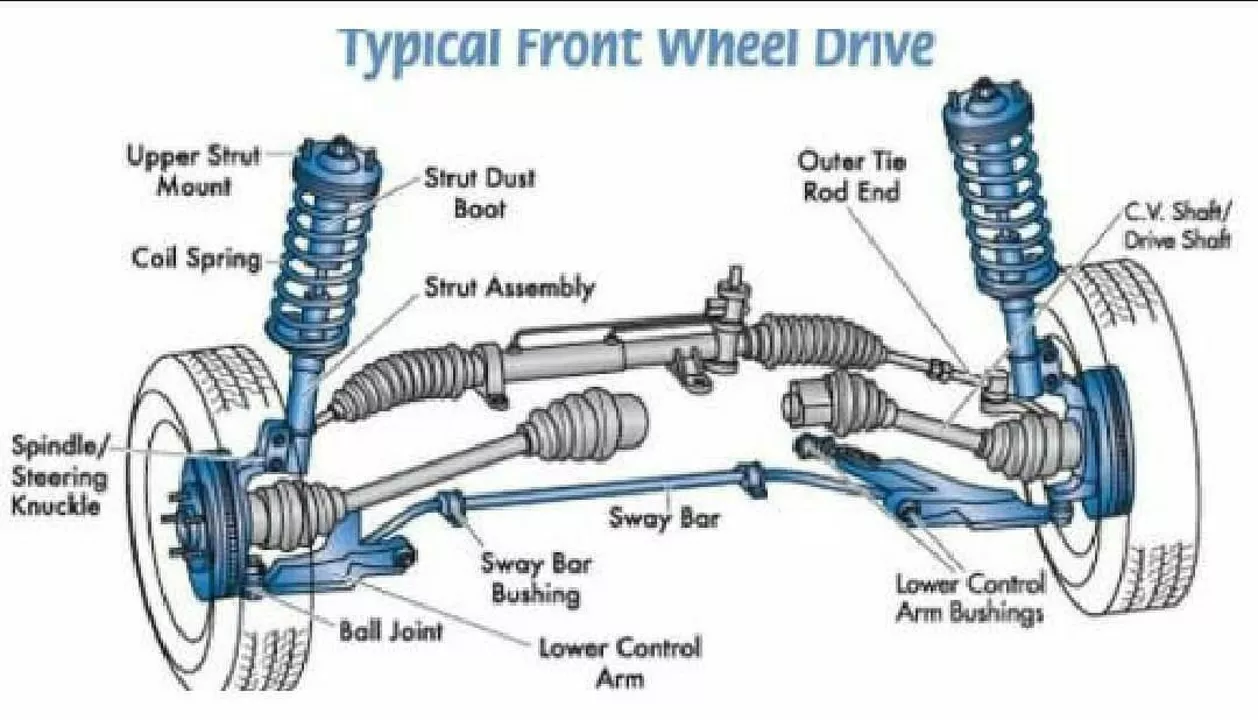Understanding the Purpose of Springs in a Car
Before diving into the topic of cutting springs to lower a car, it's essential to understand the purpose of springs in a vehicle. Springs are a crucial component of a car's suspension system, providing support and absorbing road shocks. They ensure a smooth and comfortable ride, while also keeping the car stable and safe. In this section, we'll discuss the importance of springs, how they work, and their role in a car's overall performance.
The Appeal of Lowering a Car
Lowering a car has become quite a popular trend among car enthusiasts in recent years. There are several reasons behind this trend, such as improved aesthetics, better handling, and increased aerodynamics. A lowered car often has a more aggressive look, which many car enthusiasts find appealing. Moreover, a lower center of gravity can lead to better handling, as it reduces body roll and improves cornering ability. Additionally, a lowered car might experience reduced air resistance, which can improve fuel efficiency and overall performance. In this section, we'll explore these benefits in detail and discuss why some people choose to lower their cars.
The Risks of Cutting Springs
While there are several benefits to lowering a car, cutting the springs to achieve this goal can be quite risky. This method involves physically cutting the springs, which can lead to a range of potential issues. These can include a harsher ride, reduced suspension travel, and compromised safety. In this section, we'll delve into the risks associated with cutting springs and why it might not be the best option for lowering your car.
Alternative Methods for Lowering a Car
Fortunately, there are several safer and more effective methods for lowering a car than cutting the springs. These alternatives include using lowering springs, coilovers, or air suspension systems. Each of these options offers its own set of benefits and drawbacks, so it's essential to carefully consider which method is best for your specific needs and preferences. In this section, we'll discuss these alternative methods in detail and provide insight into how they work and their advantages.
Professional Installation vs. DIY
When it comes to lowering a car, one of the most critical decisions is whether to seek professional help or attempt a DIY project. While DIY might seem more cost-effective, it can be quite challenging and time-consuming, especially for those who lack experience in car modifications. On the other hand, professional installation can be more expensive but ensures that the job is done correctly and safely. In this section, we'll weigh the pros and cons of each option and provide guidance on making the best decision for your situation.
Maintaining Ride Comfort and Safety
A primary concern when lowering a car is maintaining ride comfort and safety. Cutting springs can lead to a harsher ride, reduced suspension travel, and compromised safety. However, if you choose a safer method for lowering your car, like using lowering springs or coilovers, it's possible to maintain a comfortable ride while still enjoying the benefits of a lowered vehicle. This section will discuss how to ensure your car remains comfortable and safe after being lowered.
Legal Considerations and Insurance Implications
It's essential to be aware of any legal issues and insurance implications that might arise from modifying your car. In many areas, there are specific regulations regarding vehicle height and suspension modifications. Additionally, insurance companies might view a lowered car as a higher risk and charge higher premiums or even refuse coverage altogether. In this section, we'll discuss these potential issues and provide tips on how to avoid any legal or insurance problems.
Resale Value and Potential Buyers
Another factor to consider when lowering your car is how it might affect the resale value and potential buyer interest. While some buyers may appreciate the improved aesthetics and performance of a lowered car, others may be wary of potential suspension issues or the risk of damage from road hazards. In this section, we'll discuss how to navigate the resale market for a modified vehicle and ensure a smooth selling process.
Conclusion: Is it Bad to Cut Springs to Lower a Car?
In conclusion, while cutting springs might seem like an easy and cost-effective way to lower your car, it's important to be aware of the potential risks and drawbacks involved. From a compromised suspension system to legal and insurance issues, cutting springs might not be the best solution for everyone. Instead, consider alternative methods like lowering springs, coilovers, or air suspension systems, which can provide a safer and more effective way to lower your car while maintaining ride comfort and safety. Ultimately, the decision to cut springs or opt for a different method will depend on your specific needs, preferences, and budget.

